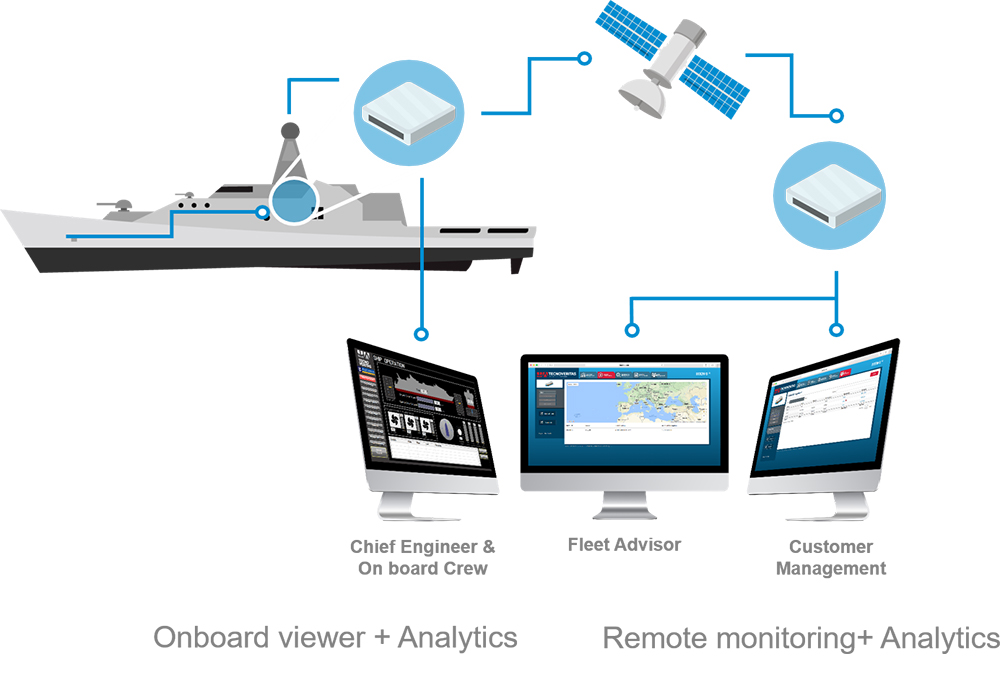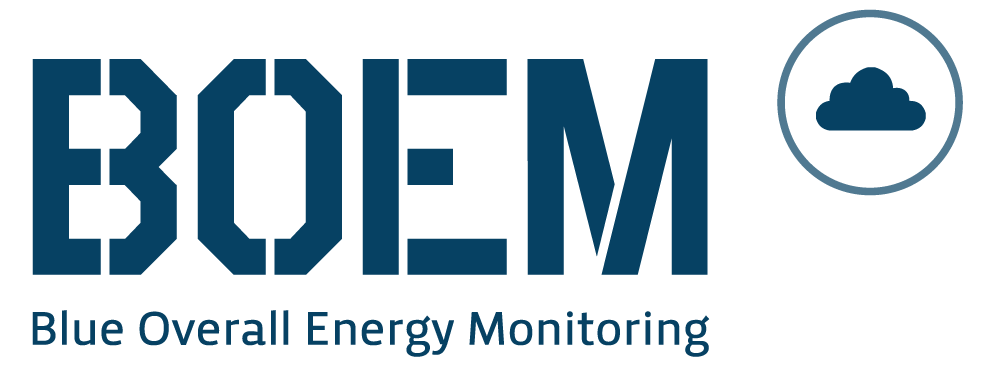It is increasingly necessary to improve ship operation processes and to improve them it is necessary to measure. Transversal measurement allows monitoring the ship’s energy, mechanical and operational behaviour and streamlines processes.
Rising fuel prices, Decrease of freight, Spare part costs and regulations related to reducing the emissions require a permanent monitoring of energy and performance.
Ship Main Areas and the Actions to take:
- Engine optimization
- Carry out performance test with a combustion analyser;
- Record performance data;
- Measure and calculate the fuel oil consumption;
- Check the plan maintenance records;
- Analyse the results;
- Optimize the engines if applicable and evaluate the effects.
- Cylinder Oil Consumption
- Check or measure the actual cylinder oil consumption at normal service load;
- Calculate and verify if the cylinder oil feed rate matches the manufacturer recommendation;
- If applicable, inspect the piston ring areas, pistons, cylinder liners and scavenging airspace;
- Give advice regarding the cylinder oil feed rate;
- If applicable make a feed rate table for the actual engine.
- Hull and Propeller Efficiency
- Check when the latest propeller polishing was carried out;
- Check when the latest soft brushing of the hull was carried out;
- Plot the engine speed and load in the propeller curve diagram in connection with performance tests
- of the main engine at two or more different loads;
- Evaluate the propeller curve diagram to verify if the engine load is optimum for the actual engine speed;
- Give advice accordingly.
- Oil fired‐boiler Optimisation
- Measure the flue gas content in the flue gas channel with a flue gas instrument;
- Analyse the result of the measurement;
- When needed to optimize the fuel/air ratio to its optimum at different capacities (low, medium, high);
- Where applicable check the condition of fuel nozzles, burner throats, swirls and linkages;
- Apply air control through O2 probe feedback into ventilator speed through VSD;
- Adjust the pressure, to what is absolutely needed.
- Steam Production & Consumption
- Check the oil‐fired boiler consumption in port and at sea and compare;
- Check the exhaust gas boiler capacity;
- Check the cascade/feed water tank temperature, return condensate temperature and steam/condensate dumping;
- Check the tank cleaning heater function;
- Check the cargo heating;
- Check major steam traps;
- Check the pipe insulation;
- Check the design of the steam and condensate system and give advice on how to modify the systems to reduce the energy losses.
- Fuel & Lubrication Oil Treatment
- Check the fuel oil preheating temperatures, pressures, fuel meter and visco-meters function for the main engine and auxiliary engines;
- Check the heavy fuel oil purifiers function, flow and preheating temperatures;
- Check the storing temperatures in the heavy fuel oil bunker tanks, settling and service tanks;
- Check the lubrication oil purifiers function, flow and preheating temperatures;
- Check the lubrication oil consumption of the main engine and auxiliary engines;
- When applicable check the lubrication oil analysis reports of the different equipment.
- Equipment Utilisation
- Low Load Operation of Diesel Generators – Check if there are normally too many Diesel Generators in service compared to the load;
- Usage Guide and planning for Diesel Generators usage during Cargo Operation – “Usage Guide” for how many heavy consumers such as nitrogen compressors and hydraulic aggregates can be used for 1 or 2 or 3 Diesel Generators during cargo operations;
- Power Management System – Check the function of the Power Management System for the Diesel Generators;
- Shaft Generator – Check if the shaft generator is operational;
- Fresh Water Generator – Check the capacity and usage of the fresh water generator;
- Other Consumers – Check if there are too many seawater pumps, low-temperature pumps, thermal oil pumps, prolong run of compressors (air leaks) etc;
- Energy Saving Equipment – Investigate if it is beneficial to install frequency converted working air compressors, seawater pumps, engine room fans etc.
How to correctly take the actions without a big effort?
Regarding the points referred above, there is too much to do on a ship to guarantee its optimum performance and it is very easy to skip some of the tasks, resulting in unnecessary costs. However, there are systems that allow you to have everything on track, assuring your ship performance, and the reduction of fuel consumption and maintenance costs.
VEEO – Ship Performance System – The Data Collection Phase
VEEO is a Ship Performance System based upon TecnoVeritas interfacing automation technology at three different levels of equipment and software modules. The system on-board was designed to assist crews in optimising the fuel consumption of the vessel and to monitor performance and emissions in real time. Less energy spent, mean less fuel cost, and a significant contribution to the environment.
VEEO captures key ship operation variables that allow the definition of vessel key performance indicators (KPI). It simplifies the establishment of SEEMP in compliance with IMO mandatory regulations as it collects operational data from all onboard main energy converters such as main engines, auxiliary engines, boilers, propellers, etc., allowing to determine the basis of the energy balance and, therefore, to accomplish an enhanced energy management of the vessel.
VEEO can be set up to transmit the collected data directly ashore through various modes, namely to the cloud. The system can deliver an integrated part of most automation systems (typically on new ships) or as a stand-alone installation (typically on existing ships). Meaningful, customised, and user-friendly human-machine interfaces of the various process involved are available, helping towards an intuitive operation of the systems.
BOEM-S –The Cloud-Based Platform – The Data Analysis Phase
The platform ashore is the BOEM-S, which will perform the perfect connection between ship and shore.
BOEM-S is a Fleet Performance Management platform, which has the ability of “crunching” and cracking the raw data, filtering it and delivering it to the right persons.
It receives the ship Data, Processes the Data in the Cloud, Delivers Personalized Data on a real-time basis to each user according to their own needs. BOEM-S has also a number of tools, such as Fleet Performance Management; Fleet Condition Monitoring, Fleet Maintenance Management, Documentation Management (Reports, Certificates, Manuals, Etc.), Voyage Economic Results Simulator.
Alarms and customised reports are some of the features that can help in tracking all the maintenance and crew tasks.
VEEO + BOEM-S offers to your company:
- All major fleet performance tools, organised in a friendly and logical tree structure Web‐based performance management portal;
- Intuitive dashboards and automated reports for voyage, hull & propeller, engine & systems performance, e.g. consumptions, speed profiles, weather conditions, trim optimisation, SFOC, EEOI, emissions, RPM, M/E loads, running hours, Condition monitoring of ship systems;
- Hull degradation based on resistance force measurements and calculations;
- Comprehensive means to compare, analyse and benchmark fleet operation and behaviour;
- Access to AIS or other portal users, to benchmark the performance of your company against others;
- Apart from regular performance or instantaneous reports, TecnoVeritas may provide advice, alertness and troubleshooting by a team of skilled engineer experts.
- Available expert system to support decisions.
BOEM-S and VEEO can be acquired independently and can connect to other monitoring systems already available.

